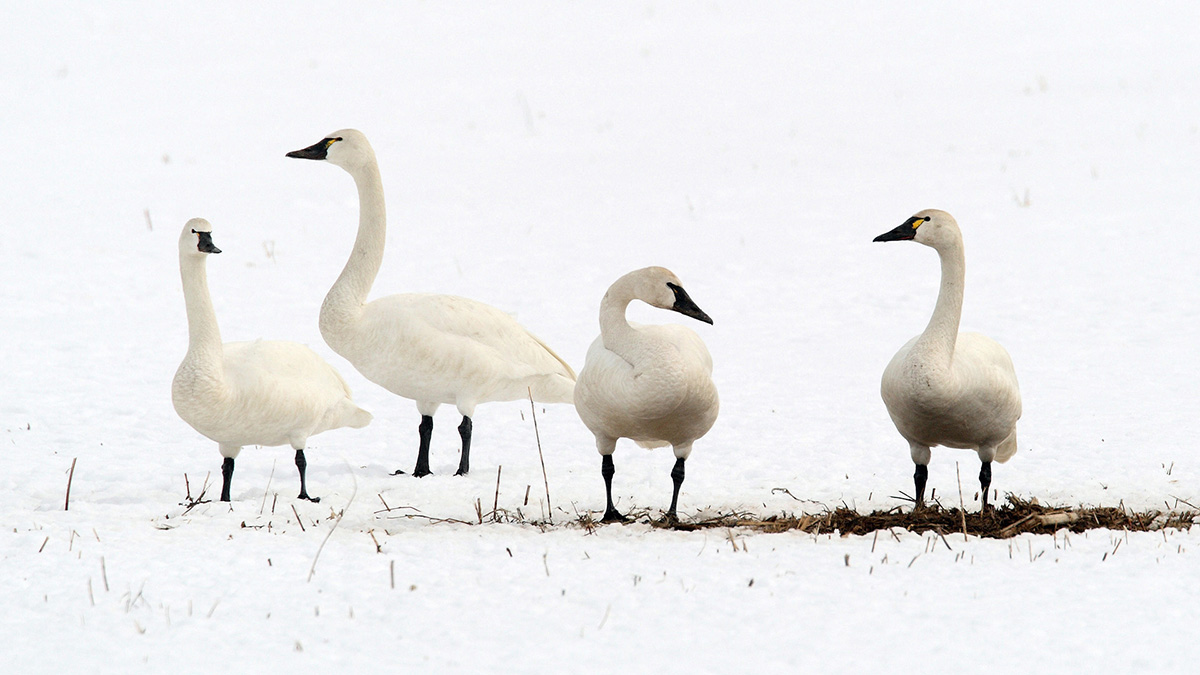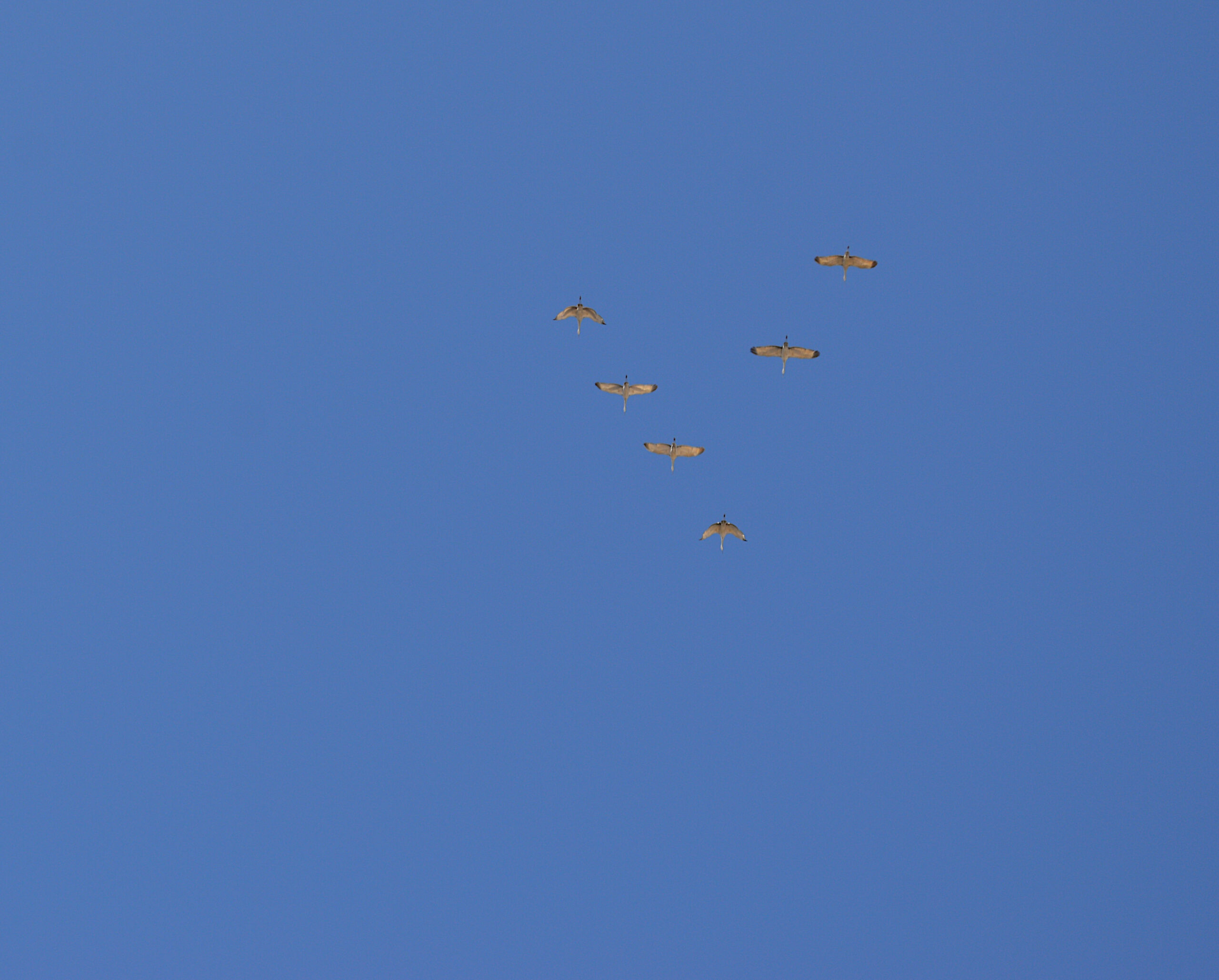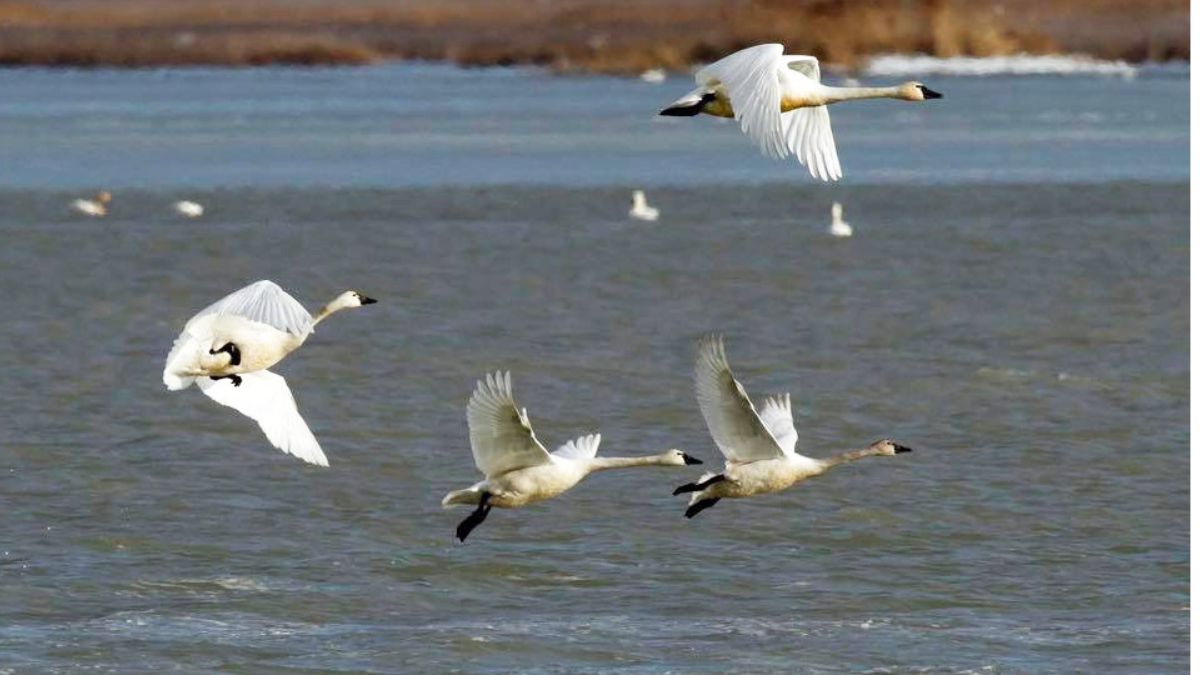Wildlife
Where to see swans migrating through Utah this Spring

Four Tundra swans make a stop along their migratory route which passes through parts of Utah. Photo: DWR
OGDEN, Utah – Every year, thousands of tundra and trumpeter swans pass through Utah during their spring migration, offering bird-watchers a spectacular sight. March is the peak time to catch a glimpse of these majestic birds as they stop in northern Utah’s wetlands to rest and refuel before continuing north to their breeding grounds in Canada and Alaska.
What to Look For
Two species of swans migrate through Utah:
- Trumpeter swans, the largest waterfowl species in North America, boast an 8-foot wingspan and a distinctive trumpet-like call.
- Tundra swans are slightly smaller and can be identified by a yellow spot near their eyes.

“Because of their large size, swans are amazing birds to see in flight,” said Mark Hadley, Utah Division of Wildlife Resources Northern Region Outreach Manager. “They’re huge and almost pure white in color, making them easy to spot.”
For the best chance to see these birds in March, check out these top locations:
1. Salt Creek Waterfowl Management Area
📍 Location: 12 miles northwest of Corinne
- The Compton’s Knoll viewing area provides an elevated vantage point overlooking the marsh.
- Two bird-viewing blinds at the bottom of the hill offer a closer look.
🚨 Note: Other parts of the WMA are closed during the year. Visitors must remain behind closed gates and stick to designated viewing areas.
2. Bear River Migratory Bird Refuge
📍 Location: 12 miles west of Brigham City
- The 12-mile Auto Tour Route winds through prime swan habitat, with opportunities to see thousands of birds.
- Stop at the observation tower near the entrance for panoramic marsh views.
3. Eccles Wildlife Education Center at Farmington Bay WMA
📍 Location: Farmington Bay, south of Farmington
- Swans can sometimes be spotted from the Robert N. Hasenyager Great Salt Lake Nature Reserve trails, open dawn to dusk.
- The Eccles Wildlife Education Center, open Tuesday-Saturday (11 a.m. to 4 p.m.), features a taxidermied trumpeter swan for an up-close look at this impressive bird.
🚨 Note: Vehicle traffic is restricted in the WMA from March through September.
While fall migration in November offers another opportunity to see swans, spring is an ideal time for bird-watchers to experience these graceful birds in flight. Grab your binoculars or spotting scope and head to one of these locations for an unforgettable wildlife experience.



















